- Proper timing for autumn fertilisation
- Importance of soil analysis before fertilisation
- Benefits of soil analysis
- How to conduct a soil analysis
- Adequate nutrient selection for fruit trees
- 1. Nitrogen (N)
- 2. Phosphorus (P)
- 3. Potassium (K)
- 4. Micronutrients
- 5. Organic matter
- Avoiding excessive fertilisation
- 1. Test your soil
- 2. Follow recommended dosage
- 3. Avoid late-season fertilisation
- 4. Use slow-release fertilisers
- 5. Monitor tree response
- 6. Maintain proper tree care
- Proper application techniques for autumn fertilisation
- 1. Timing
- 2. Fertiliser selection
- 3. Application rates
- 4. Application method
- 5. Watering
- 6. Mulching
- 7. Record keeping
- Common mistakes to avoid during autumn fertilisation
- Impact of combining fertilisation with other procedures
- Positive impacts
- Negative impacts
- Benefits of separate treatment for autumn fertilisation
- “Question-Answer”
- Why should I avoid combining procedures during autumn fertilisation of fruit trees?
- What are some of the procedures that should be avoided during autumn fertilisation of fruit trees?
- Can I prune my fruit trees while fertilising them in autumn?
- Should I avoid spraying pesticides during autumn fertilisation of fruit trees?
- What are the benefits of avoiding combined procedures during autumn fertilisation of fruit trees?
- When is the best time to fertilise fruit trees in autumn?
- “Video” GRAFTING 8 FRUIT TREES – with RESULTS | Plum, Almond, Pear, Apple, Nectarine, Fig, Peach and Olive
Autumn is an important time for fertilising fruit trees, as it provides the necessary nutrients for healthy growth and fruit production. However, it’s important to note that not all procedures should be combined during this time. Mixing certain procedures can have negative effects on the trees and may reduce their overall health and productivity.
One procedure that should be avoided during autumn fertilisation is pruning. While pruning is essential for maintaining the shape and size of the trees, it can create wounds that are susceptible to disease and infection. By performing pruning and fertilisation at the same time, you are providing an open invitation for pathogens to enter the tree and cause damage.
Another procedure that should not be combined with autumn fertilisation is pesticide application. Pesticides are often used to control pests and diseases in fruit trees, but they can also have negative effects on the tree’s health if applied during fertilisation. The chemicals in pesticides can interfere with the nutrient absorption process and may lead to nutrient imbalances in the tree.
Additionally, it’s important to avoid combining heavy watering with autumn fertilisation. While watering is important for providing trees with the necessary moisture, overwatering during fertilisation can cause the nutrients to leach out of the soil and away from the tree’s roots. This can result in nutrient deficiencies and a weakened tree.
In conclusion, when fertilising fruit trees in autumn, it’s best to avoid combining procedures such as pruning, pesticide application, and heavy watering. By separating these procedures and timing them appropriately, you can ensure the health and productivity of your fruit trees for years to come.
Proper timing for autumn fertilisation
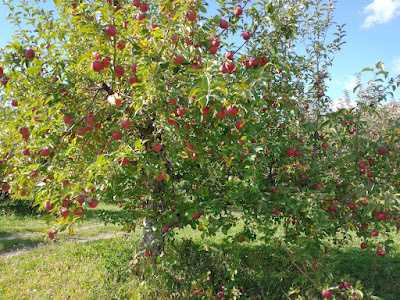
Timing is crucial when it comes to autumn fertilisation of fruit trees. The optimal period for this procedure is typically between September and October, right before the trees enter dormancy.
By fertilising at the right time, you can ensure that the nutrients are efficiently absorbed by the trees and stored for future growth. It also helps to promote healthy root development and overall vitality.
Factors to consider when determining the timing:
- Climate: Take into account the average temperature and precipitation patterns in your region. Ensure that the weather conditions are suitable for the absorption and distribution of nutrients.
- Tree variety: Different fruit tree varieties have varying growth cycles and nutrient requirements. Research the specific needs of your trees to determine the optimal timing for fertilisation.
- Fruit production: Consider the timing of fruit production. Fertilising too late in the season may disrupt the natural process and impact the quantity and quality of the harvested fruit.
Benefits of proper timing:
- Promotes healthy root development.
- Enhances overall tree vitality.
- Improves nutrient absorption and storage.
- Prevents nutrient deficiencies or excesses.
- Supports optimal fruit production.
Conclusion:
Taking into consideration various factors such as climate, tree variety, and fruit production, it is crucial to determine the proper timing for autumn fertilisation of fruit trees. By fertilising at the right time, you can ensure the optimal absorption and storage of nutrients, promoting healthy tree growth and fruit production.
Importance of soil analysis before fertilisation
Before applying fertilisers to fruit trees in autumn, it is crucial to conduct a soil analysis. Soil analysis provides vital information about the nutrient levels and pH balance of the soil, which can greatly influence the effectiveness of fertilisation.
Soil analysis helps to identify nutrient deficiencies or imbalances, allowing for a targeted approach to fertilisation. By knowing the nutrient levels present in the soil, fruit tree owners can apply the appropriate fertilisers to meet the specific needs of their trees.
Benefits of soil analysis
- Optimal nutrient levels: Soil analysis helps determine the existing nutrient levels in the soil. This information is essential for maintaining optimal nutrient levels, which are necessary for healthy growth and development of fruit trees.
- Correcting deficiencies: Soil analysis can highlight any nutrient deficiencies, such as a lack of nitrogen, phosphorus, or potassium. By addressing these deficiencies through targeted fertilisation, fruit tree owners can ensure that their trees receive the necessary nutrients for optimal growth and yield.
- Avoiding nutrient imbalances: Soil analysis can also identify nutrient imbalances, such as excessive levels of certain nutrients. These imbalances can negatively impact fruit tree health and productivity. By understanding the nutrient levels in the soil, fruit tree owners can avoid over-fertilisation and its potential negative consequences.
How to conduct a soil analysis
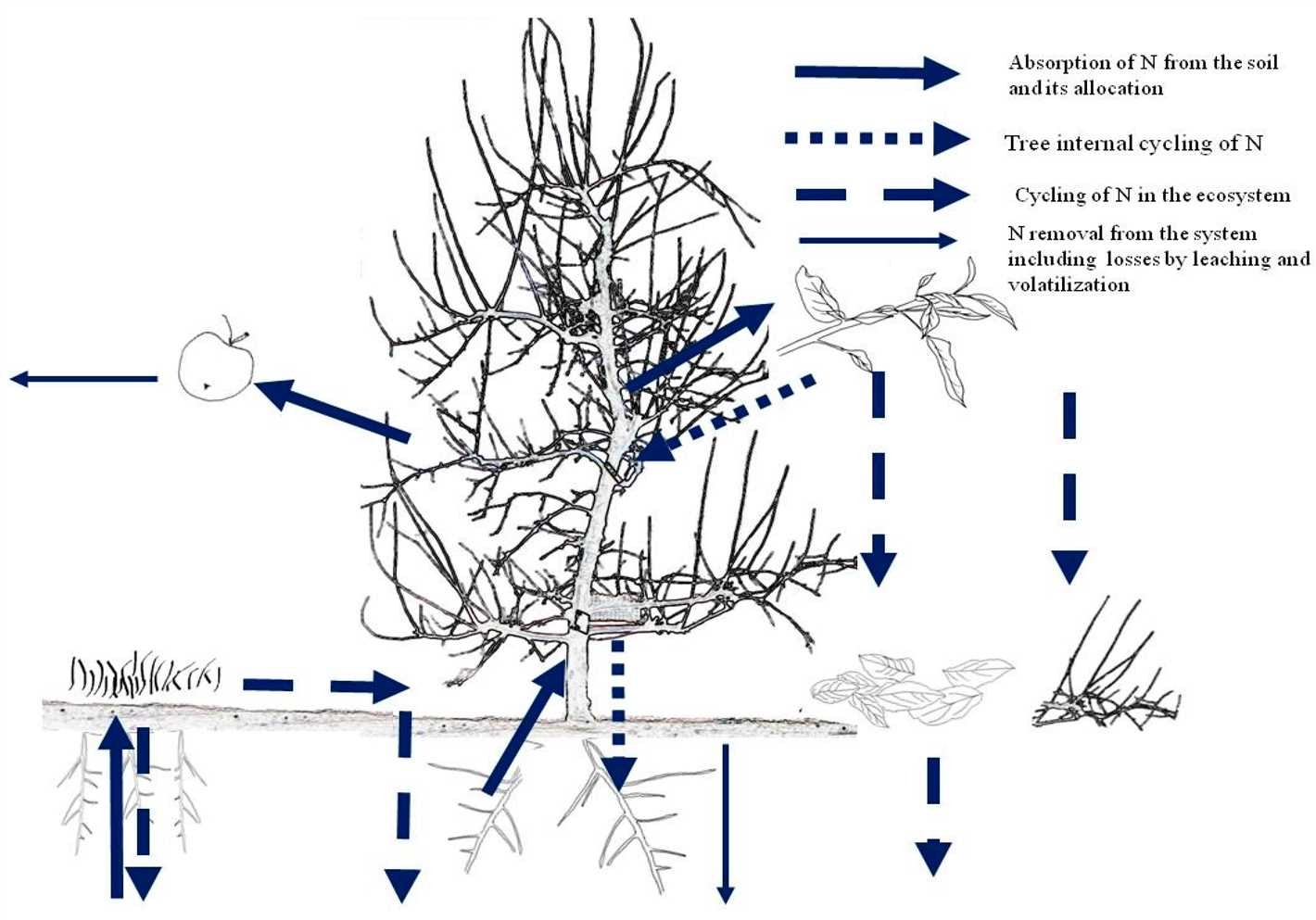
Qualified professionals can perform a soil analysis or provide soil testing kits for home use. The process typically involves collecting soil samples from various areas within the orchard, following specific instructions for proper sampling. These samples are then sent to a laboratory for analysis.
The laboratory analysis provides a detailed report of the soil’s nutrient composition, pH level, and other relevant factors. This information allows fruit tree owners to make informed decisions regarding fertilisation and soil management.
In conclusion, conducting a soil analysis before fertilisation is crucial for effective orchard management. It provides valuable insights into the nutrient levels and pH balance of the soil, enabling fruit tree owners to apply the correct fertilisers to address deficiencies, avoid imbalances, and promote healthy growth and yield.
Adequate nutrient selection for fruit trees
Fruit trees require a balanced combination of nutrients in order to thrive and produce optimal yields. Adequate nutrient selection is crucial during the autumn fertilisation period to ensure the trees have the necessary nutrients to survive the winter and promote healthy growth in the spring.
1. Nitrogen (N)
Nitrogen is a vital nutrient for fruit trees as it plays a crucial role in promoting leaf and shoot growth. However, excessive nitrogen can result in excessive vegetative growth at the expense of fruit production. It is important to choose a nitrogen fertilizer that provides a slow-release form of nitrogen to ensure a steady supply throughout the growing season.
2. Phosphorus (P)
Phosphorus is essential for fruit tree root development, flowering, and fruit set. It also helps improve the overall health and vigor of the tree. When selecting a phosphorus fertilizer, choose one that is high in phosphorus content and has a slow-release formulation. This will ensure that the roots have access to phosphorus for an extended period of time.
3. Potassium (K)
Potassium is important for overall tree health, as it helps regulate water uptake and improves the tree’s resistance to diseases and pests. It is also crucial for fruit development and quality. Look for a potassium fertilizer with a slow-release formula to ensure a consistent supply throughout the growing season.
4. Micronutrients
In addition to the macronutrients mentioned above, fruit trees also require various micronutrients such as iron, zinc, manganese, and boron. These nutrients are essential for the tree’s metabolic processes and play a key role in fruit development and overall tree health. It is recommended to use a complete fertilizer that contains these micronutrients or to apply them separately if deficiencies are identified through soil testing.
5. Organic matter
Incorporating organic matter into the soil can also greatly benefit fruit trees. Organic matter improves soil structure, enhances nutrient availability, and promotes beneficial microbial activity. Consider adding compost, well-rotted manure, or cover crops to increase organic matter content in the soil during autumn fertilisation.
Remember to always read and follow the instructions on the fertilizer packaging to ensure proper application rates and timing. By selecting the appropriate nutrients and applying them correctly, you can help your fruit trees thrive and produce bountiful harvests.
Avoiding excessive fertilisation
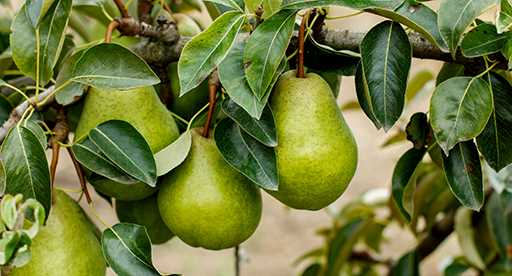
Fertilisation is an important part of the autumn care routine for fruit trees. However, it is crucial to avoid excessive fertilisation to prevent potential damage to the trees and negative effects on their growth and development. Here are some tips to help you avoid overfertilisation:
1. Test your soil
Before applying any fertilisers, it is recommended to test your soil to determine its nutrient content. This will help you understand which nutrients are lacking and whether fertilisation is even necessary. Excessive fertilisation can lead to imbalances in the soil and cause nutrient runoff.
2. Follow recommended dosage
Always follow the recommended dosage according to the specific type of fertiliser you are using. Overapplying fertilisers can result in excess nutrients, which can be detrimental to the tree’s health. Read the instructions carefully and measure the fertiliser accurately to avoid overfertilisation.
3. Avoid late-season fertilisation
Avoid fertilising too late in the autumn season, as it may encourage new growth that can be susceptible to frost damage. Late-season fertilisation can also disrupt the tree’s natural dormancy process, impacting its ability to withstand winter conditions.
4. Use slow-release fertilisers
Consider using slow-release fertilisers or organic fertilisers that release nutrients gradually over time. These types of fertilisers provide a more balanced and sustained nutrient supply to the tree, reducing the risk of overfertilisation and nutrient imbalances.
5. Monitor tree response
Observe how your fruit trees respond to the fertilisation. If you notice excessive foliage growth or signs of nutrient burn, it may indicate that you have applied too much fertiliser. Adjust your fertilisation practices accordingly and seek professional advice if needed.
6. Maintain proper tree care
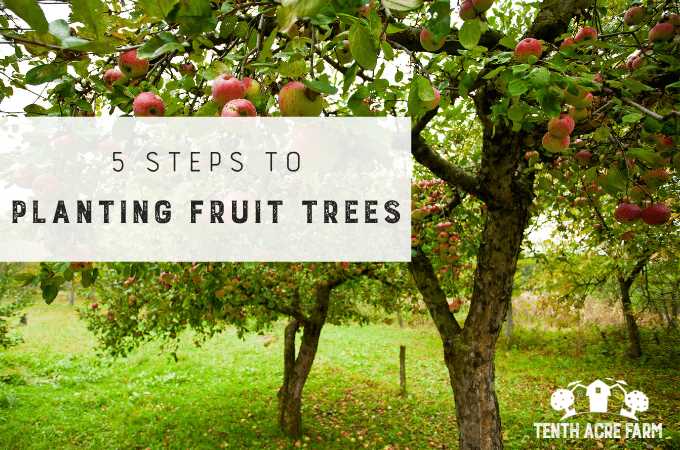
Remember that fertilisation is just one aspect of fruit tree care. Proper irrigation, pruning, and pest/disease management are also important factors in maintaining healthy trees. A well-rounded and balanced approach to tree care can help prevent the need for excessive fertilisation.
By following these guidelines, you can avoid excessive fertilisation and ensure the optimal health and growth of your fruit trees.
Proper application techniques for autumn fertilisation
1. Timing
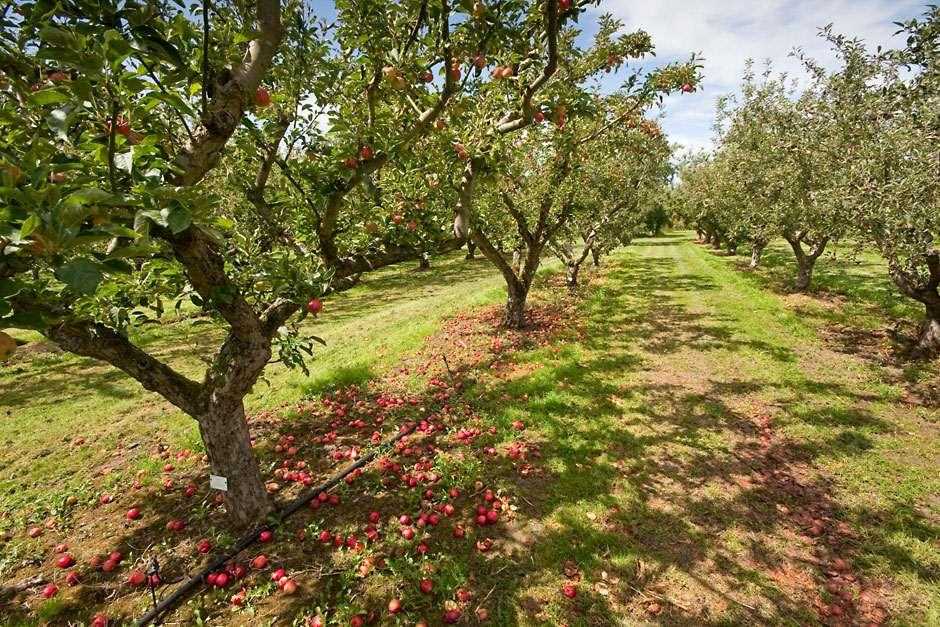
It is important to apply autumn fertilisers at the right time for optimal results. The best time to apply fertilisers is during late autumn, before the first frost. This allows the nutrients to be absorbed by the trees’ roots and stored for the winter.
2. Fertiliser selection
Choosing the right fertiliser is crucial for healthy fruit tree growth. Look for fertilisers that are specifically formulated for fruit trees and contain necessary nutrients such as nitrogen, phosphorus, and potassium. It is also recommended to choose organic fertilisers to promote long-term soil health and sustainability.
3. Application rates
Follow the recommended application rates provided by the fertiliser manufacturer. Applying too much fertiliser can lead to nutrient runoff and environmental pollution. On the other hand, applying insufficient amounts may not provide enough nutrients for the trees. It is important to strike the right balance for efficient and sustainable fertilisation.
4. Application method
There are several methods for applying fertiliser to fruit trees. One common method is to spread the fertiliser evenly around the base of the tree, avoiding direct contact with the trunk. Another option is to use a broadcast spreader to evenly distribute the fertiliser over a larger area. Additionally, some gardeners prefer to mix the fertiliser with water and apply it as a liquid solution.
5. Watering

After applying the fertiliser, it is important to water the trees thoroughly. This helps to dissolve the fertiliser and allows the nutrients to penetrate the soil and reach the tree roots. Adequate watering also prevents the fertiliser from sitting on the soil surface, where it can be washed away by rain or irrigation.
6. Mulching
Applying a layer of mulch around the base of the fruit trees after fertilisation can help conserve moisture, suppress weed growth, and slowly release nutrients into the soil. Organic mulch, such as wood chips or compost, is recommended for best results.
7. Record keeping
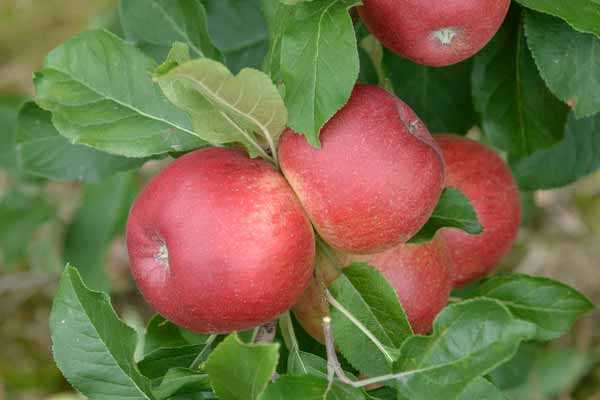
Keeping track of fertilisation practices is essential for long-term tree health. Record the types of fertilisers used, their application rates, and the dates of application. This information will help monitor the effectiveness of the fertilisers and make adjustments as necessary.
By following these proper application techniques for autumn fertilisation, you can ensure the health and productivity of your fruit trees throughout the year.
Common mistakes to avoid during autumn fertilisation
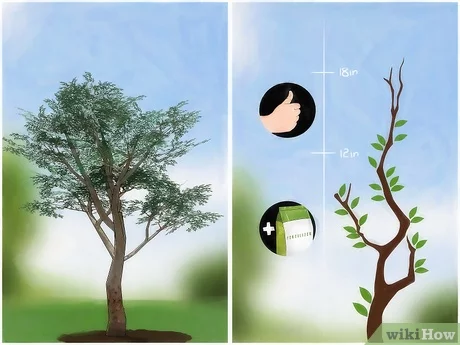
- Applying too much fertilizer: It is important to follow the recommended dosage when applying fertilizer to fruit trees in autumn. Applying excessive amounts of fertilizer can lead to nutrient imbalance and can harm the trees.
- Applying the wrong type of fertilizer: Different fruit trees have different nutritional requirements. It is crucial to use the appropriate type of fertilizer that provides the necessary nutrients for the specific type of fruit tree being fertilized.
- Not testing the soil: Before applying fertilizer, it is advisable to test the soil to determine its pH level and nutrient composition. This information can help in determining the appropriate type and amount of fertilizer required by the fruit trees.
- Timing of fertilization: Fertilizing fruit trees too late in autumn may not give sufficient time for the nutrients to be absorbed before winter dormancy. It is important to time the fertilization correctly to ensure the trees receive the necessary nutrients leading up to dormancy.
- Ignoring proper tree maintenance: Fertilization is just one aspect of tree care. It is important to make sure the fruit trees are properly pruned, watered, and protected from pests and diseases, in addition to being fertilized. Neglecting these aspects can result in poor fruit production and overall tree health.
- Fertilizing unhealthy trees: Prior to fertilization, it is important to ensure that the trees are in good health. Fertilizing unhealthy trees can potentially worsen their condition and may not result in desired outcomes. It is advisable to address any existing issues or diseases before applying fertilizer.
- Using synthetic chemicals: While it may be tempting to use synthetic chemicals for quick results, it is advisable to opt for organic or natural fertilizers. Synthetic chemicals can have adverse effects on the environment, wildlife, and human health. Organic or natural fertilizers are a more sustainable option for long-term tree health.
Impact of combining fertilisation with other procedures
Combining fertilisation with other procedures during autumn can have both positive and negative impacts on the growth and development of fruit trees. It is important to carefully consider the implications before implementing any combination.
Positive impacts
- Time efficiency: Combining fertilisation with other procedures such as pruning or pest control can save time for fruit tree farmers. Instead of applying fertilisers separately, they can take advantage of existing activities and accomplish multiple tasks simultaneously.
- Cost savings: By combining procedures, farmers can reduce the need for multiple separate applications and potentially save on labour, equipment, and materials.
- Enhanced nutrient absorption: Some procedures, when combined with fertilisation, can enhance the uptake and absorption of nutrients by the fruit trees. For example, pruning can increase light penetration and air circulation, allowing the fertilisers to reach the roots more effectively.
Negative impacts
- Risk of nutrient imbalances: Combining fertilisation with other procedures may increase the risk of nutrient imbalances in fruit trees. Different procedures may have different nutrient requirements, and combining them without proper knowledge can lead to over or under-application of certain nutrients, affecting tree health and productivity.
- Potential for increased stress: Combining multiple procedures can put additional stress on the fruit trees. Pruning, for example, removes branches and foliage, which may make the trees more vulnerable to environmental stressors. Adding fertilisation on top of that can further increase the stress level, potentially impacting tree recovery and growth.
- Limited effectiveness: Some procedures, when combined with fertilisation, may decrease the effectiveness of each individual task. For instance, if fertilisation is done during a time when tree growth is naturally slowed down, the impact of the fertilisers may be reduced.
In conclusion, combining fertilisation with other procedures during autumn can provide benefits in terms of time efficiency and cost savings. However, it also carries risks such as nutrient imbalances, increased stress, and limited effectiveness. It is important for fruit tree farmers to carefully assess the potential impact and seek professional advice before implementing any combination of procedures.
Benefits of separate treatment for autumn fertilisation
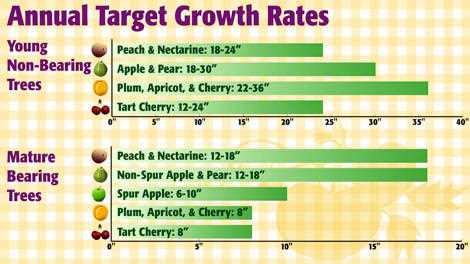
Avoiding the combination of certain procedures during autumn fertilisation of fruit trees can offer several benefits:
- Optimized nutrient uptake: When different procedures are carried out separately, it allows for a more targeted and precise application of nutrients. This ensures that the trees receive the right amount of nutrients at the right time, improving their overall health and productivity.
- Prevention of nutrient imbalance: By separately applying fertilisers and other procedures, it becomes easier to prevent nutrient imbalances in the soil. This can help avoid excessive accumulation of certain nutrients, which can negatively affect the growth and development of fruit trees.
- Customized treatment: Separating procedures allows for a customized treatment plan based on the specific needs of the fruit trees. Different trees may require different amounts and types of fertilizer, and by treating them separately, it becomes easier to provide individualized care.
- Reduced risk of damage: Certain procedures, such as pruning or pesticide application, can potentially damage young or newly fertilized fruit trees. By carrying out these procedures separately, the risk of accidental damage is minimized, ensuring the health and longevity of the trees.
By avoiding the combination of procedures during autumn fertilisation of fruit trees, growers can ensure that their trees receive the best possible care, leading to improved yield and healthier trees in the long run.
“Question-Answer”
Why should I avoid combining procedures during autumn fertilisation of fruit trees?
Combining procedures during autumn fertilisation of fruit trees can overwhelm the trees and hinder their growth. It is important to give the trees the time and space they need to absorb the nutrients from the fertiliser without additional stress.
What are some of the procedures that should be avoided during autumn fertilisation of fruit trees?
Some procedures that should be avoided during autumn fertilisation of fruit trees include pruning, spraying pesticides, and applying other chemical treatments. These procedures can put additional stress on the trees and hinder their ability to absorb nutrients from the fertiliser effectively.
Can I prune my fruit trees while fertilising them in autumn?
No, it is not recommended to prune fruit trees while fertilising them in autumn. Pruning can cause stress to the trees and disrupt their natural growth cycles. It is best to prune fruit trees during the dormant season or in spring after they have completed their fruiting cycle.
Should I avoid spraying pesticides during autumn fertilisation of fruit trees?
Yes, it is advisable to avoid spraying pesticides during autumn fertilisation of fruit trees. Pesticides can be harmful to the trees, especially when they are in a vulnerable state after fertilisation. It is best to apply pesticides before or after the fertilisation process to ensure the trees’ health and effectiveness of the treatment.
What are the benefits of avoiding combined procedures during autumn fertilisation of fruit trees?
Avoiding combined procedures during autumn fertilisation of fruit trees allows the trees to focus on absorbing and utilizing the nutrients from the fertiliser. This can result in improved overall tree health, increased fruit production, and better resistance to diseases and pests. It also minimizes stress on the trees and promotes their natural growth cycles.
When is the best time to fertilise fruit trees in autumn?
The best time to fertilise fruit trees in autumn is before the onset of cold weather and when the trees have completed their fruiting cycle. This usually occurs in late autumn or early winter. Fertilising at this time allows the trees to absorb and store nutrients for the upcoming dormant period and promotes healthy root and shoot growth in the following spring.







